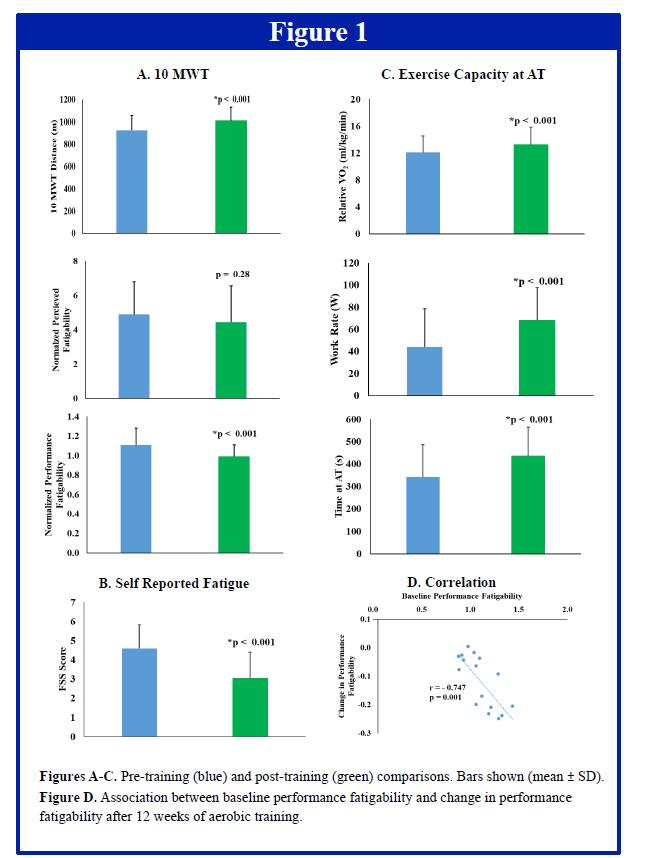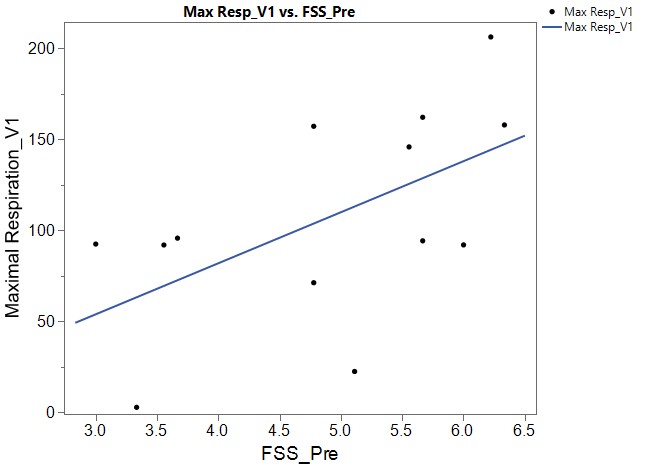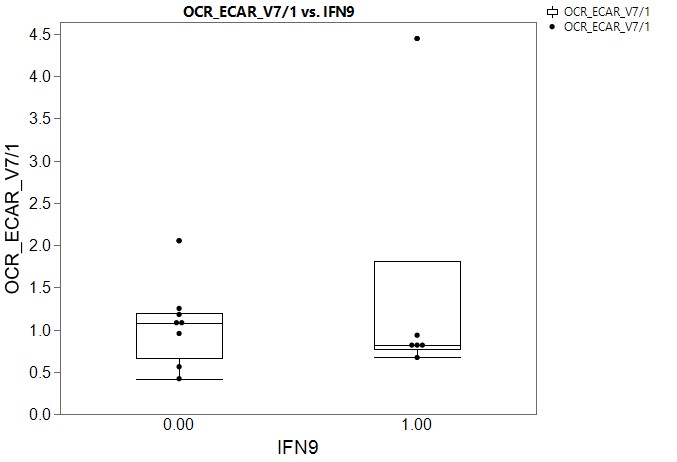Session Information
Date: Monday, November 8, 2021
Title: SLE – Diagnosis, Manifestations, & Outcomes Poster III: Outcomes (1257–1303)
Session Type: Poster Session C
Session Time: 8:30AM-10:30AM
Background/Purpose: Fatigue in SLE patients is ubiquitous and is reported as one of the most debilitating symptoms. Yet mechanisms underlying the pathophysiology of SLE-related fatigue are not well understood. Data from our group and others have shown that fatigue is independent of SLE disease activity. One mechanism proposed to explain fatigue is impairment in mitochondrial metabolism. Impaired mitochondrial metabolism lead to abnormal T-cell activation and effector function contributing to immune dysregulation. Type I IFN were shown to downregulate mitochondria-derived genes and metabolic pathways causing increased apoptosis of CD8+ T-cells contributing to SLE pathogenesis. Regulation of mitochondrial transmembrane potential (Δψm) and blocking mammalian target of rapamycin (mTOR) in T-cells was shown to improve SLE disease activity and fatigue. The purpose of this study is to characterize the responses to an aerobic exercise program in SLE patients and to understand mechanisms underlying fatigue.
Methods: Sixteen female SLE patients with SELENA-SLEDAI < 4 that self-reported the presence of significant fatigue (Fatigue Severity Scale=FSS > 3) were enrolled in a supervised, aerobic exercise training program of treadmill exercise for 30 minutes, thrice a week for 12 weeks. The primary outcome measure was the time to reach the anaerobic threshold(tAT) during a cardiopulmonary exercise test (CPET). Secondary outcomes included 10 Minute Walk Test (10MWT) distance, and self-reported changes in fatigue and health related quality of life from the FSS and the Patient-Reported Outcomes Measurement Information System (PROMIS) scores, respectively. Extracellular flux studies were done to measure mitochondrial dysfunction (MiD) by Oxygen Consumption Rate (OCR) / ExtraCellular Acidification Rate (ECAR) ratio before and after administering mitochondrial respiratory inhibitors and interferon stimulated genes (ISGs) signature by nanostring.
Results: The mean ±SD age of subjects was 42.0 (± 10.3) years with the duration of disease 9.1 (± 6.5) years, 8/16 (50%) of subjects were Hispanic. The baseline SELENA-SLEDAI and FSS scores were mean (±SD)1.4 (± 1.9) and 4.6 (± 1.2) respectively. There were significant improvements in tAT (p< 0.001), 10 MWT (p< 0.001), total FSS score(p< 0.0001), and most of the PROMIS domains(Fig. 1). The disease activity remained unchanged throughout the study. The pre and post-exercise decrease in FSS scores correlated with increases in OCR/ECAR ratio (r=-0.59, p=0.03)(Fig. 2). A subset of subjects (9/16) had significant reductions in post-exercise ISGs expression (p=0.007) accompanied by a significant increase in OCR/ECAR ratio (p=0.013)(Fig.3).
Conclusion: In this study a 12- week exercise program resulted in significant improvements in physiological reserve and self-reported fatigue. Fatigue correlated with MiD which improved with exercise. The ISGs scores improved with a corresponding improvement in MiD. Larger studies are needed to confirm the role of MiD in the pathogenesis and its therapeutic targeting in management of fatigue in SLE.
 Figure 1: Pre-Exercise and post-exercise of Anaerobic Threshold(AT), 10MWT, FSS, and
Figure 1: Pre-Exercise and post-exercise of Anaerobic Threshold(AT), 10MWT, FSS, and
 Figure 2: FSS correlates with mitochondrial maximal respiration. r = 0.59, p =0.03
Figure 2: FSS correlates with mitochondrial maximal respiration. r = 0.59, p =0.03
 Figure 3: The 9 patients with improved IFN signature had higher increases in OCR/ECAR ratio from V1 to V7. V7-V1 indicates the difference in values between the 2 timepoints. V7/V1 indicates the ratio. p = 0.013
Figure 3: The 9 patients with improved IFN signature had higher increases in OCR/ECAR ratio from V1 to V7. V7-V1 indicates the difference in values between the 2 timepoints. V7/V1 indicates the ratio. p = 0.013
To cite this abstract in AMA style:
Hasni S, Chapman M, Feng R, Ahmad A, Gupta S, Naqi M, Munday A, Lu S, Gadina M, Manna Z, Li X, Shi Y, Mishra-Thakur K, Davis M, Chu J, Poncio E, Temesgen-Oyelakin Y, Martinez J, Morris Z, Ochoa I, Nakabo S, Drinkard B, McCrossin G, Stockman M, Kaplan M, Saligan L, Keyser R, Chan L, Chin L. A 12-week Aerobic Exercise Training Program in Women with Systemic Lupus Erythematosus (SLE) Improves Fatigue, Mitochondrial Dysfunction and Associated Interferon Gene Signature [abstract]. Arthritis Rheumatol. 2021; 73 (suppl 9). https://acrabstracts.org/abstract/a-12-week-aerobic-exercise-training-program-in-women-with-systemic-lupus-erythematosus-sle-improves-fatigue-mitochondrial-dysfunction-and-associated-interferon-gene-signature/. Accessed .« Back to ACR Convergence 2021
ACR Meeting Abstracts - https://acrabstracts.org/abstract/a-12-week-aerobic-exercise-training-program-in-women-with-systemic-lupus-erythematosus-sle-improves-fatigue-mitochondrial-dysfunction-and-associated-interferon-gene-signature/
